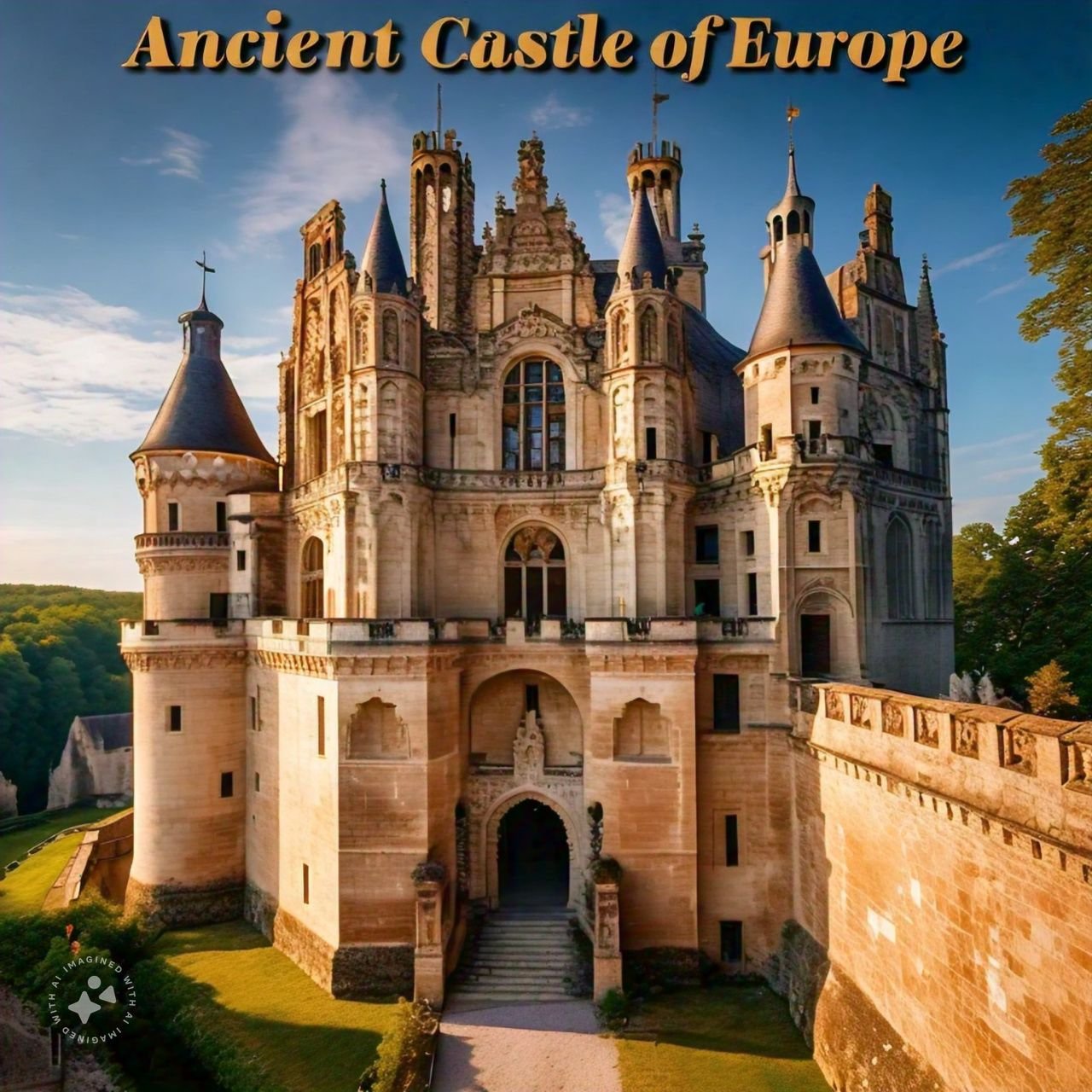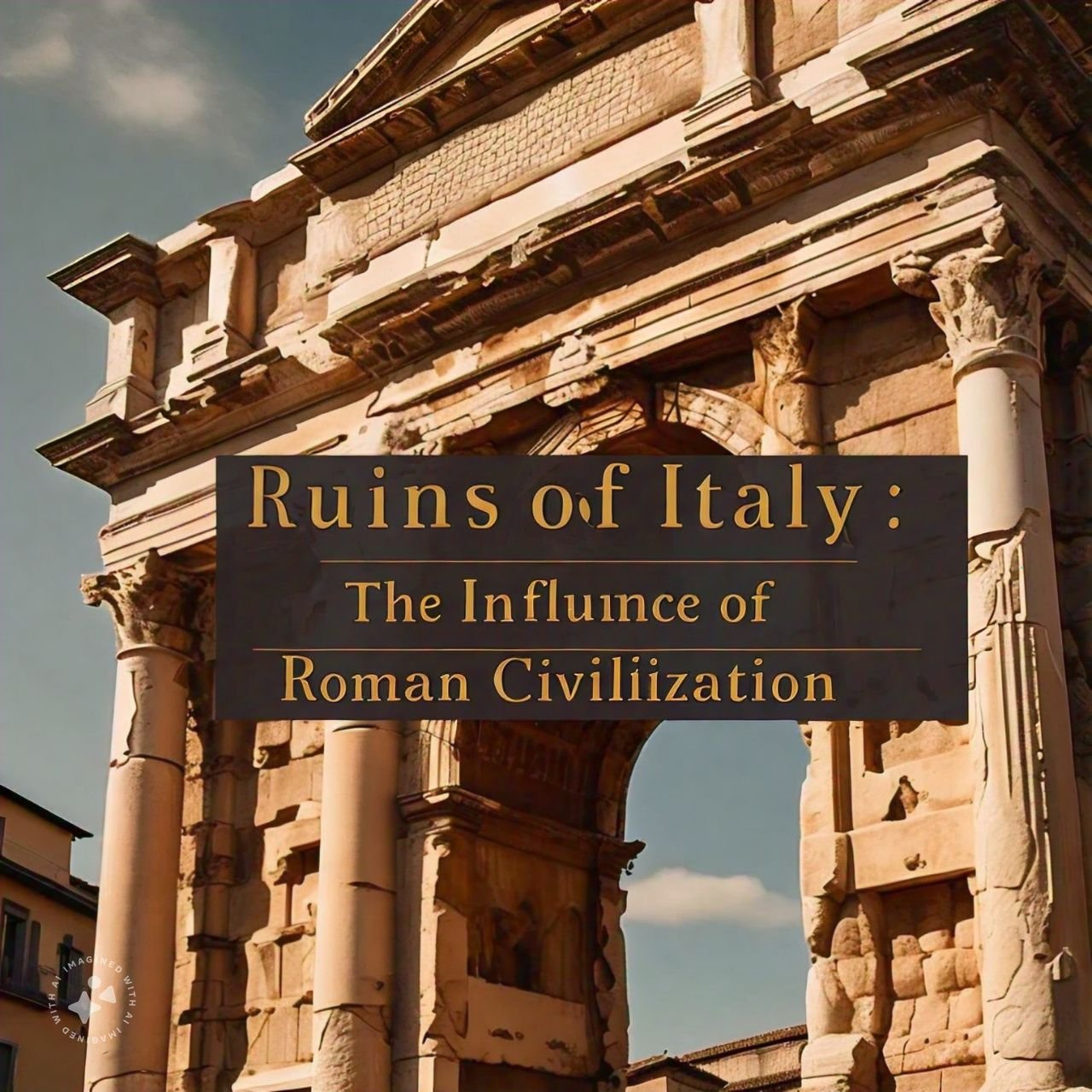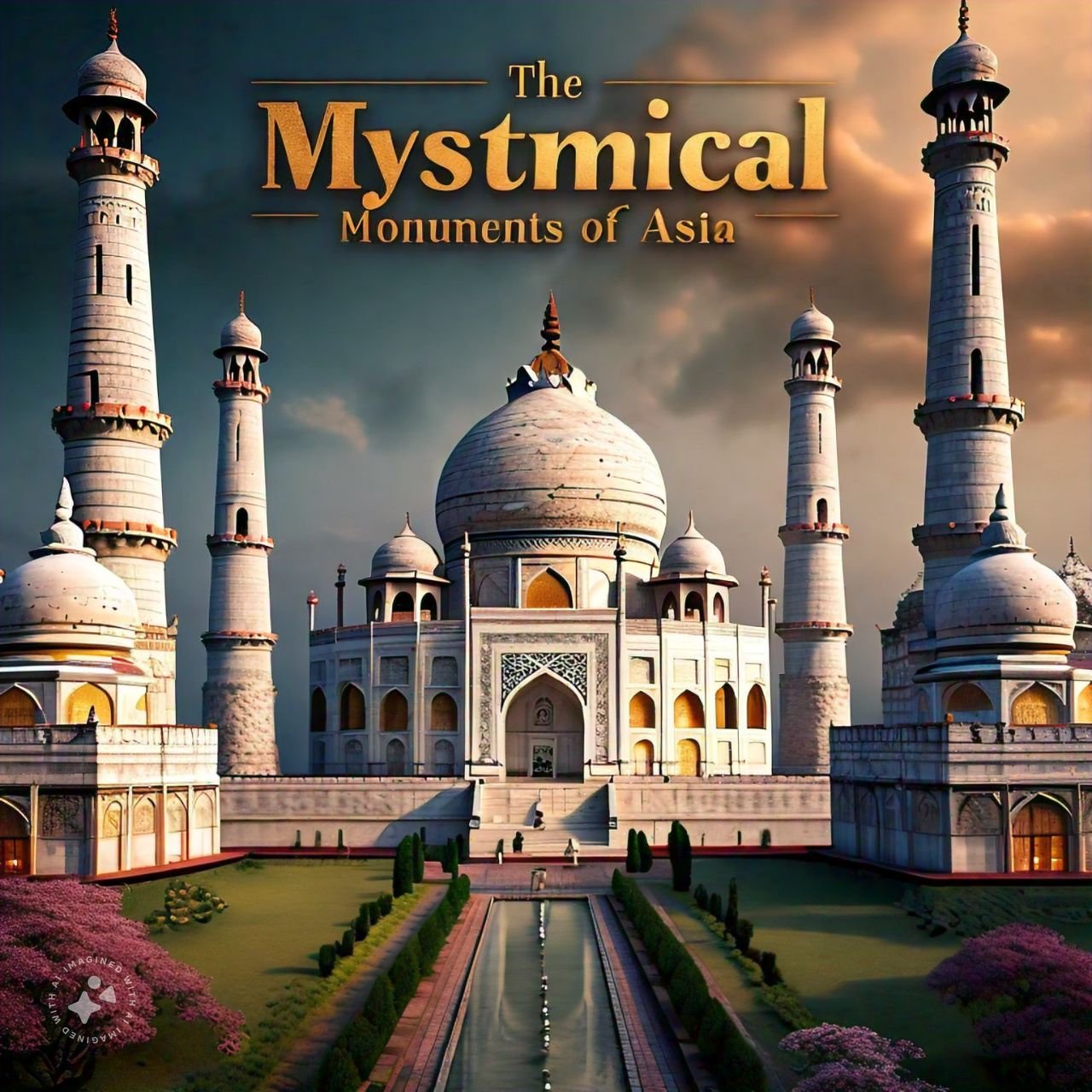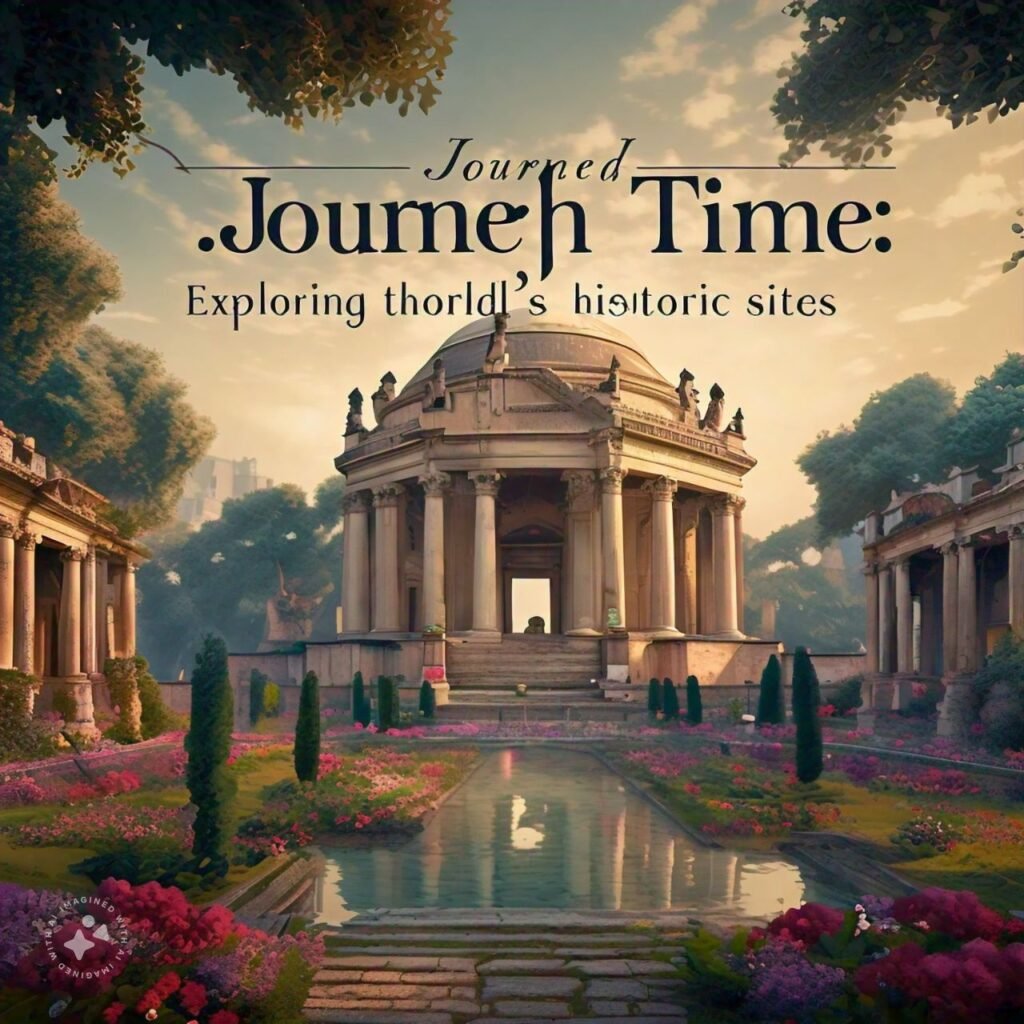Introduction
Traveling is a passion that unites people from all walks of life, but for history enthusiasts, the allure of ancient cities, monumental ruins, and historic landmarks is irresistible. These destinations, shaped by the sands of time, offer a unique glimpse into bygone eras, unlocking stories and mysteries that captivate the imagination. This article explores some of the world’s most intriguing historical sites, inviting you to embark on an unforgettable journey filled with culture, heritage, and adventure.
Ancient Castles of Europe

Europe is renowned for its historical richness, with ancient castles standing as majestic reminders of its turbulent past. These fortresses, spread across the continent, tell tales of kings, queens, battles, and architectural brilliance.
The Loire Valley, France
The Loire Valley is home to some of the most exquisite châteaux in France. Among them, the Château de Chambord stands out with its stunning Renaissance architecture and sprawling grounds. Each castle has its own narrative; for instance, Château de Chenonceau, spanning the River Cher, reflects the influence of powerful women in French history. Exploring these castles offers not only a taste of history but also breathtaking landscapes and exquisite gardens.
Edinburgh Castle, Scotland
Perched atop Castle Rock, Edinburgh Castle is a symbol of Scotland’s enduring spirit. The castle’s history dates back to the 12th century and is filled with tales of sieges and royal events. The Honours of Scotland, the Scottish crown jewels, and the Stone of Destiny can be found here, making it a significant site for understanding Scotland’s national identity.
Neuschwanstein Castle, Germany
Nestled in the Bavarian Alps, Neuschwanstein Castle is often described as the fairytale castle of the world. Commissioned by King Ludwig II, its romantic architecture and stunning surroundings have inspired countless tales and films. Visitors can explore the opulent rooms and learn about Ludwig’s mysterious life, making this castle a captivating stop on any European itinerary.
Each of these castles serves as a portal to the past, allowing travelers to immerse themselves in the rich tapestry of European history. Visiting these landmarks is more than just sightseeing; it is an experience steeped in heritage and storytelling.
Ancient Ruins of South Asia
South Asia boasts a wealth of ancient ruins that reflect its diverse cultural history. From grand architectural marvels to lesser-known sites, the region is a treasure trove for those eager to explore its past.
The Taj Mahal, India
The Taj Mahal, a UNESCO World Heritage Site, is perhaps the most iconic symbol of love and a pinnacle of Mughal architecture. Built by Emperor Shah Jahan in memory of his beloved wife Mumtaz Mahal, this stunning white marble mausoleum is adorned with intricate inlay work and surrounded by lush gardens. Visiting the Taj Mahal at sunrise or sunset offers a magical experience as the changing light enhances its beauty.
The Indus Valley Civilization: Mohenjo Daro and Harappa
The ancient cities of Mohenjo Daro and Harappa provide insight into one of the world’s earliest urban civilizations, the Indus Valley Civilization. Located in modern-day Pakistan and India, these archaeological sites reveal advanced urban planning, sophisticated drainage systems, and vibrant trade networks. Exploring these ruins allows travelers to connect with a civilization that thrived thousands of years ago.
Hampi, India
Hampi, another UNESCO World Heritage Site, was once the capital of the Vijayanagara Empire. Its landscape is dotted with the ruins of temples, palaces, and marketplace remnants. The stunning Virupaksha Temple and the Vijaya Vittala Temple, with its iconic stone chariot, showcase the architectural prowess of the era. Hampi’s unique boulder-strewn landscape adds to its otherworldly charm, making it a must-visit for history lovers.
Each of these sites offers a profound connection to the past, allowing travelers to experience the rich tapestry of South Asian history and culture.
Ruins of Italy: The Influence of Roman Civilization

Italy is synonymous with ancient history, particularly the legacy of the Roman Empire. A journey through Italy is an exploration of ruins that tell the story of a civilization that shaped the world.
The Colosseum, Rome
No trip to Italy is complete without a visit to the Colosseum, the largest ancient amphitheater ever built. This iconic structure once hosted gladiatorial contests and public spectacles, drawing crowds of thousands. Walking through its arches and imagining the grandeur of the events that took place here provides a palpable connection to Rome’s imperial past.
The Roman Forum
Adjacent to the Colosseum lies the Roman Forum, the heart of ancient Rome’s political, social, and economic life. Here, visitors can wander through the ruins of temples, basilicas, and public spaces that once thrummed with activity. Each stone tells a story, and guided tours can help bring these ancient sites to life, shedding light on the daily lives of Romans.
Pompeii and Herculaneum
The catastrophic eruption of Mount Vesuvius in 79 AD preserved the ancient cities of Pompeii and Herculaneum under layers of ash. These sites offer a unique glimpse into Roman life, with well-preserved buildings, frescoes, and artifacts that reveal the daily routines and social structures of the time. Walking through the streets of Pompeii feels like stepping back in time, offering a haunting yet fascinating perspective on a moment frozen in history.
Italy’s rich historical tapestry invites travelers to explore the remnants of the Roman Empire, immersing themselves in a past that continues to influence modern culture.
Ancient Cities of the Middle East
The Middle East is a cradle of civilization, home to some of the oldest cities and historical sites in the world. Exploring this region reveals the profound legacy of ancient cultures.
Petra, Jordan
Petra, known as the “Rose City,” is a UNESCO World Heritage Site famous for its rock-cut architecture and water conduit system. This ancient Nabatean city, hidden in the mountains of southern Jordan, offers stunning views and intricate carvings, including the iconic Al-Khazneh (The Treasury). The journey to Petra is just as captivating as the destination, with the dramatic Siq gorge leading visitors to its majestic entrance.
The Pyramids of Giza, Egypt
The Pyramids of Giza stand as enduring symbols of ancient Egypt’s architectural prowess and religious beliefs. The Great Pyramid, the last of the Seven Wonders of the Ancient World, draws countless visitors each year. Exploring these monumental tombs and the Sphinx nearby offers insights into the beliefs and practices of the ancient Egyptians, making it a must-see for any traveler.
Palmyra, Syria
Palmyra, once a flourishing caravan city, is renowned for its stunning Greco-Roman ruins. The monumental arch, temples, and colonnaded streets reflect the city’s historical significance as a cultural crossroads. Despite recent conflicts, the spirit of Palmyra’s rich history endures, captivating visitors with its ancient grandeur.
These ancient cities of the Middle East not only showcase architectural marvels but also reveal the stories of civilizations that shaped human history.
The Mystical Monuments of Asia

Asia is home to numerous ancient monuments that reflect its diverse cultures and historical narratives. From grand temples to vast fortifications, the continent offers a wealth of exploration opportunities.
The Great Wall of China
The Great Wall of China is one of the most iconic symbols of Chinese civilization. Stretching over 13,000 miles, this monumental fortification was built to protect against invasions and has witnessed centuries of history. Walking along its rugged paths, travelers can enjoy stunning vistas while contemplating the monumental effort that went into its construction.
Angkor Wat, Cambodia
Angkor Wat is the largest religious monument in the world, originally built as a Hindu temple and later converted to Buddhism. Its intricate carvings and grand scale reflect the artistic and architectural brilliance of the Khmer Empire. Exploring the vast temple complex at sunrise offers a breathtaking experience, as the rising sun casts golden hues on its sandstone façade.
Kyoto, Japan
Kyoto is a city that encapsulates the essence of traditional Japanese culture. With its ancient temples, such as Kinkaku-ji (the Golden Pavilion) and Kiyomizu-dera, Kyoto offers visitors a serene atmosphere steeped in history. The Gion district, known for its geisha culture, further enriches the experience, inviting travelers to explore the beauty of Japan’s past.
These mystical monuments of Asia provide a fascinating glimpse into the region’s rich cultural heritage, allowing travelers to engage with the history and traditions that continue to shape modern societies.
Ancient Ruins of Africa
Africa’s history is rich and diverse, with ancient ruins and sites that tell the stories of powerful civilizations. From monumental structures to ancient churches, Africa’s historical landmarks offer unique insights into its cultural evolution.
The Pyramids of Giza, Egypt
No discussion of African history is complete without mentioning the Pyramids of Giza. These remarkable structures, built as tombs for the pharaohs, are a testament to ancient Egyptian engineering and artistry. The Great Pyramid, standing at over 480 feet tall, remains one of the most significant architectural achievements in history.
The Temple of Luxor
Luxor Temple, located on the east bank of the Nile, is another iconic site in Egypt. Built to honor the god Amun, the temple showcases exquisite carvings and massive statues. A visit to Luxor Temple, especially at night when it is beautifully illuminated, allows travelers to immerse themselves in the grandeur of ancient Egyptian religion and culture.
Lalibela, Ethiopia
The ancient churches of Lalibela, carved directly into the rock, are a UNESCO World Heritage Site and a marvel of engineering and faith. These monolithic churches, built in the 12th century, reflect Ethiopia’s rich Christian heritage. Exploring these sacred sites offers a profound connection to the spiritual history of the region.
Timbuktu, Mali
Timbuktu was once a thriving center of trade and learning in medieval Africa. Its ancient mosques and the renowned Sankore University reflect its historical significance. While facing challenges today, Timbuktu remains a symbol of Africa’s intellectual heritage and cultural wealth.
Africa’s ancient ruins tell powerful stories of civilizations that flourished long before modern times, inviting travelers to connect with the continent’s deep historical roots.
The Inca and Maya Civilizations of South America
South America is home to remarkable archaeological sites that reflect the grandeur of ancient civilizations. The Inca and Maya cultures, known for their advanced knowledge and impressive architecture, continue to fascinate explorers.
Machu Picchu, Peru
Machu Picchu, the iconic Inca citadel, is a UNESCO World Heritage Site that draws travelers from around the globe. Nestled high in the Andes mountains, this ancient city showcases stunning terracing and intricate stonework. Hiking the Inca Trail to reach Machu Picchu is a transformative experience, offering breathtaking views and a connection to the ancient world.
Chichen Itza, Mexico
Chichen Itza, one of the New Seven Wonders of the World, is a testament to the architectural and astronomical achievements of the Maya civilization. The El Castillo pyramid, dedicated to the god Kukulcán, features a fascinating play of light and shadow during the equinox. Exploring the ruins and learning about Maya culture provides valuable insights into this ancient civilization’s sophisticated understanding of the cosmos.
Tikal, Guatemala
Tikal is one of the largest archaeological sites of the Maya civilization. The towering pyramids and sprawling temples amidst the lush rainforest offer a unique glimpse into the lives of the Maya people. Birdwatchers and nature enthusiasts will also delight in the diverse wildlife that inhabits the area, making Tikal a remarkable destination for both history and nature lovers.
The ancient ruins of South America are not just remnants of the past; they are gateways to understanding the rich cultures and histories that shaped the continent.
Ancient Heritage of Australia and Oceania

Australia and Oceania possess a deep history that stretches back thousands of years, with indigenous cultures preserving their traditions and stories through art, oral history, and sacred sites.
Aboriginal Rock Art, Australia
The ancient rock art found in various locations across Australia, such as the Kakadu National Park, represents one of the world’s oldest continuous cultures. These artworks tell stories of Dreamtime, the spiritual beliefs of Aboriginal peoples. Visiting these sites allows travelers to appreciate the deep connections between indigenous Australians and their land.
Māori Culture, New Zealand
The Maori culture of New Zealand is rich in history and tradition. Sites such as the Waitangi Treaty Grounds and the Tamaki Maori Village offer insights into the Māori way of life, their customs, and their historical interactions with European settlers. Engaging with local guides can provide a deeper understanding of the significance of these cultural sites.
The Ancient History of Fiji
Fiji’s ancient history is represented through its archaeological sites and cultural practices. The Sigatoka Sand Dunes are not only a natural wonder but also contain evidence of early Fijian habitation. Exploring these sites provides travelers with a glimpse into the region’s past and its evolving cultural heritage.
Traveling to Australia and Oceania allows visitors to connect with ancient histories and cultures, offering a unique perspective on human civilization’s diversity.
Conclusion
Embarking on a journey to historical places is more than just sightseeing; it is an opportunity to connect with the stories that have shaped our world. Each ancient site, monument, and ruin serves as a testament to human creativity, resilience, and cultural evolution. From the majestic castles of Europe to the sacred temples of Asia and the ancient ruins of Africa and South America, these destinations invite travelers to explore the past and gain a deeper appreciation for the legacies of those who came before us.
As you traverse these historic landscapes, you not only witness the remnants of ancient civilizations but also engage with the ongoing narratives that continue to influence our present and future. Whether standing before the pyramids of Giza, exploring the ruins of Machu Picchu, or wandering through the streets of a medieval European town, the memories and insights gained from these journeys will remain with you long after the trip is over. Every traveler leaves with a sense of connection to the rich tapestry of human history, forever changed by the stories they have encountered along the way.





